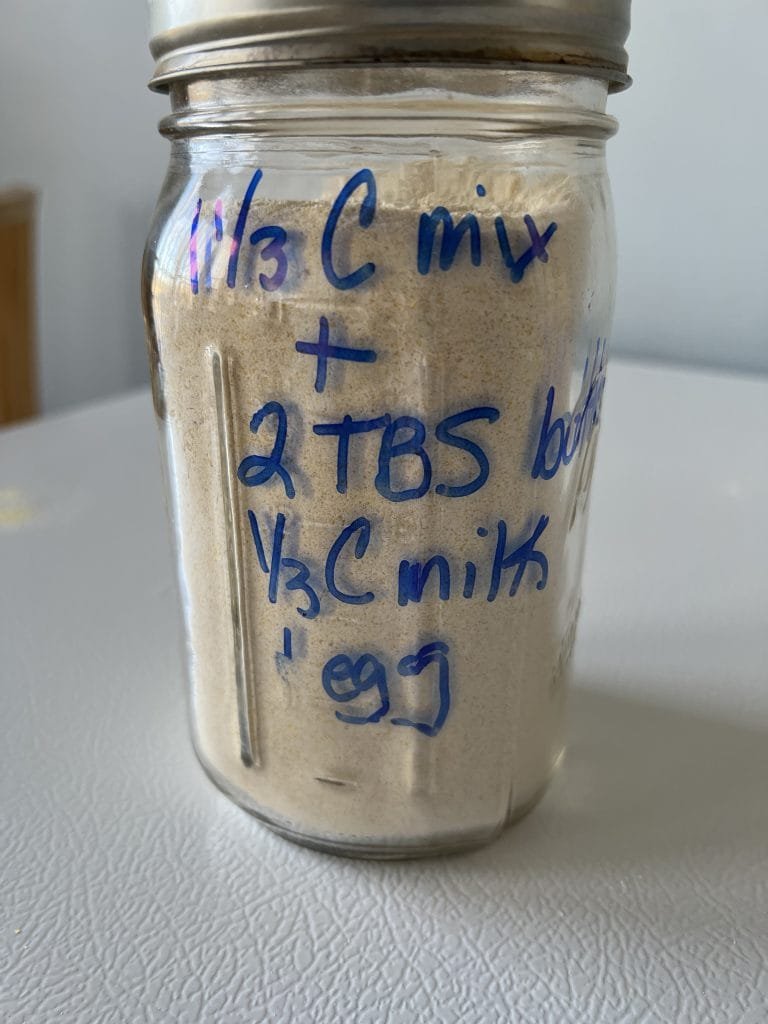
Homemade Dry Mixes are one of the best things you can have on hand to come up with an exciting dinner anytime!
I like to keep some bulk dry mixes for homemade Jiffy Corn Mix and individual jars of a homemade brownie to make a quick addition to a meal or a yummy dessert anytime.
How to Make Your Own Seasoning Mix
Think of the spices or seasonings that you use most often in combination when cooking your regular meals. Now imagine what the ratio of each one is. Is it always 1/4 teaspoon of salt and 2 grinds of fresh pepper along with 1/4 teaspoon of smoked paprika? Then go ahead and mix those spices together at those ratios. For every 1 teaspoon of salt, you will also use 1 teaspoon of paprika and 8 grinds of pepper. You can make this up in bulk to keep in a spice jar or in a small jelly jar. That way, you are only opening and adding one spice blend each time. This is a big time-saver when it comes to getting a quick dinner on the table each night.
I have a House Seasoning Mix that I use on lots of recipes and it uses just 3 ingredients. I’ll bet you have all 3 in your pantry right now.
Here is a Fajita Seasoning Mix that works great for any kind of Mexican or Tex-Mex dish. This is one of my most used homemade dry mixes as it is so versatile. I can whip up some quick tacos, or make chicken fajitas in just a few minutes by having this on hand. You know what is in this fajita fix because you made it yourself.
Make Your Own Spices From Scratch
If you are looking to make homemade dry mixes from your own peppercorns and dried herbs, you will need to get a grinder of some kind. Having everything ground fine will keep heavier items from always falling to the bottom of the jar. A coffee grinder will work just fine if you can’t locate a spice grinder. Amazon has a nice selection of dual grinders you can use for this.

Ratios for Spice Blends
There are lots of recipes for different spice blends all across the Internet. That doesn’t mean you are going to like the end result. The thing to remember is that in your kitchen, you can make it to your family’s likes and tastes. For instance, I’m not a big fan of thyme or rosemary so in a recipe that calls for that, I substitute another herb that I do like, usually chives or oregano, or both. You can start with a base recipe of someone else but then adjust to your own liking.
The following book is a good place to start as it has 50 different spice blends you can try out. Spices really help make a meal taste good and add a little extra nutritional value well.

Spice Mix Recipes: Top 50 Most Delicious Dry Spice Mixes [A Seasoning Cookbook] has 57 pages of nothing but spice mixes from around the world. No matter what dish you want to make, there is a good chance the seasonings will be shown in combination in this book.
4 Basic Types of Seasoning Ingredients
All spices or seasonings start out as a plant of some kind. Whether it is the seeds the plant produces, the root or the leaf matter or the fruit of a plant, they all start out in plant form. Then there is salt. Salt is an important part of a spice or seasoning blend but does not start out as a plant.